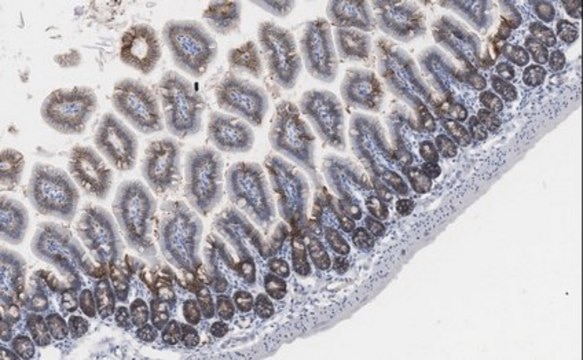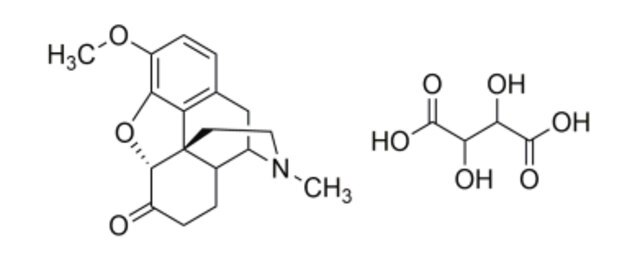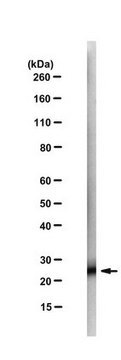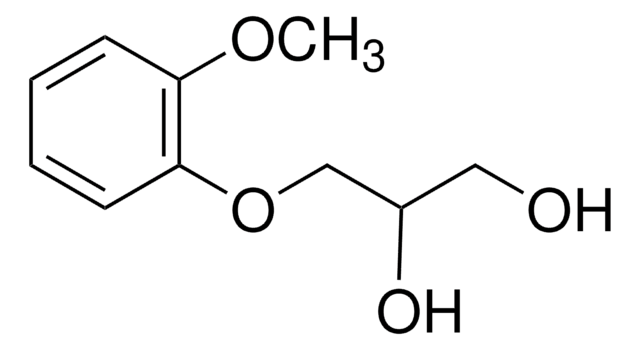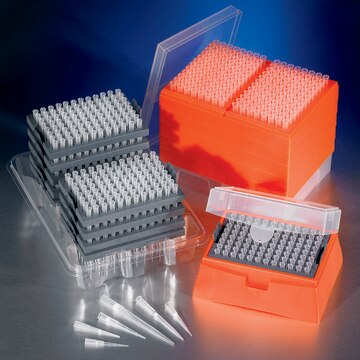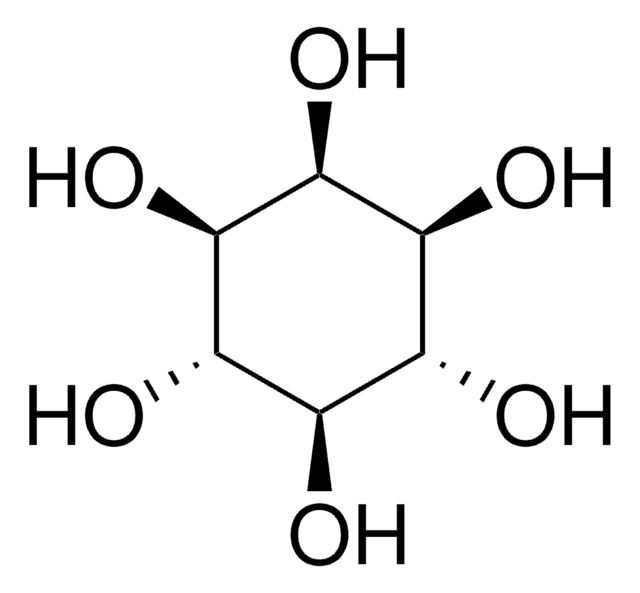MABC1161
Anti-TSPAN8 Antibody, clone CO-029 (1116NS-29)
clone CO-029, from mouse
Synonym(s):
Tetraspanin-8, Transmembrane 4 superfamily member 3, Tspan-8, Tumor-associated antigen CO-029
About This Item
Recommended Products
biological source
mouse
Quality Level
antibody form
purified antibody
antibody product type
primary antibodies
clone
CO-029, monoclonal
species reactivity
human
technique(s)
affinity binding assay: suitable
flow cytometry: suitable
immunohistochemistry: suitable (paraffin)
western blot: suitable
isotype
IgG1κ
NCBI accession no.
UniProt accession no.
shipped in
wet ice
target post-translational modification
unmodified
Gene Information
human ... TSPAN8(7103)
Related Categories
General description
Specificity
Immunogen
Application
Affinity Binding Assay: A representative lot detected surface CO-029 antigen (TSPAN8) expression among a panel of human tumor cell lines by radioimmune assay (RIA) and mixed-hemadsorption assay (MHA) (Szala, S., et al. (1990). Proc. Natl. Acad. Sci. U. S. A. 87(17):6833-6837).
Flow Cytometry Analysis: A representative lot detected surface CO-029 antigen (TSPAN8) immunoreactivity predominantly among tumor cells in pancreatic adenocarcinoma tissues-derived cell cultures (Gesierich, S., et al. (2005). Clin. Cancer Res. 11(8):2840-2852).
Immunocytochemistry Analysis: A representative lot detected CO-029 antigen (TSPAN8) immunoreactivity colocalized with those of integrins alpha6 and beta4 by dual fluorescent immunocytochemistry staining of 8.18 human pancreatic cancer cells (Gesierich, S., et al. (2005). Clin. Cancer Res. 11(8):2840-2852).
Immunocytochemistry Analysis: A representative lot detected CO-029 antigen (TSPAN8) immunoreactivity colocalized with that of integrin beta4 by dual fluorescent immunocytochemistry staining of human pancreatic cancer Capan1 cells, as well as human colon cancer HT29 and WIDR cells (Gesierich, S., et al. (2005). Clin. Cancer Res. 11(8):2840-2852).
Immunohistochemistry Analysis: A representative lot detected an upregulated CO-029 antigen (TSPAN8) immunoreactivity in frozen pancreatic adenocarcinoma tissue sections than normal pancreatic tissue sections (Gesierich, S., et al. (2005). Clin. Cancer Res. 11(8):2840-2852).
Western Blotting Analysis: A representative lot detected CO-029 antigen (TSPAN8) in integrin alpha3 immunoprecipitates from 8.18 human pancreatic cancer cell lysates (Gesierich, S., et al. (2005). Clin. Cancer Res. 11(8):2840-2852)
Western Blotting Analysis: A representative lot detected the endogenous CO-029 antigen (TSPAN8) in SW948 human colon cancer cell lysate as well as the exogenously expressed CO-029 antigen in transfected COS cells (Szala, S., et al. (1990). Proc. Natl. Acad. Sci. U. S. A. 87(17):6833-6837).
Apoptosis & Cancer
Adhesion (CAMs)
Quality
Immunohistochemistry Analysis: A 1:50 dilution of this antibody detected TSPAN8 in human colon cancer tissue section.
Target description
Physical form
Storage and Stability
Other Notes
Disclaimer
Not finding the right product?
Try our Product Selector Tool.
WGK
WGK 1
Certificates of Analysis (COA)
Search for Certificates of Analysis (COA) by entering the products Lot/Batch Number. Lot and Batch Numbers can be found on a product’s label following the words ‘Lot’ or ‘Batch’.
Already Own This Product?
Find documentation for the products that you have recently purchased in the Document Library.
Our team of scientists has experience in all areas of research including Life Science, Material Science, Chemical Synthesis, Chromatography, Analytical and many others.
Contact Technical Service
